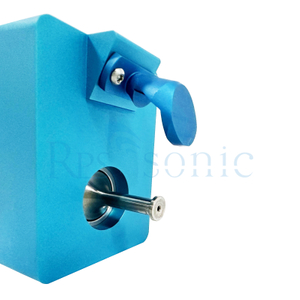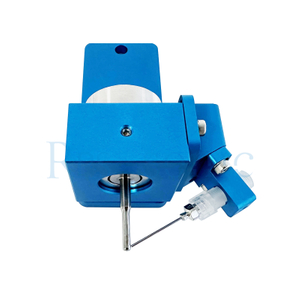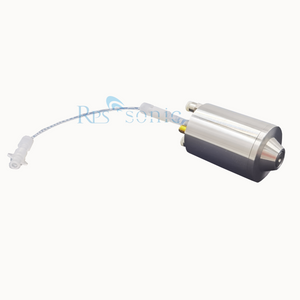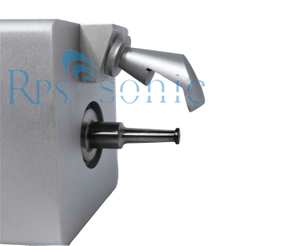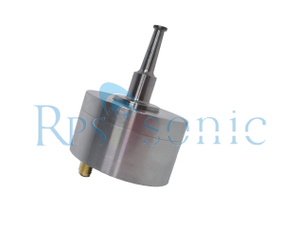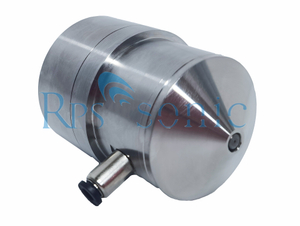Ultrasonic spray coating system is a technique for forming thin films with specific functions or properties on the surface of optical glass. It utilizes ultrasonic waves to atomize liquid into fine droplets and uniformly spray them onto the surface of optical glass.
This article introduces the principles and processes of ultrasonic spray coating system, analyzes various factors that affect its quality and efficiency, discusses methods for optimizing its parameters, and compares it with other commonly used coating technologies.
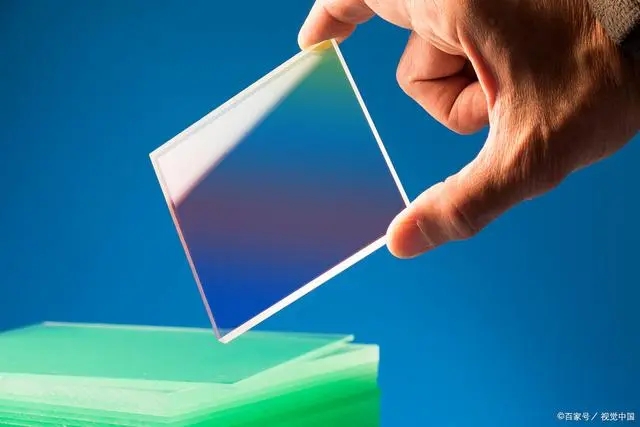
The principles of ultrasonic spray coating system mainly include the following aspects:
Ultrasonic transducer: It is the core component of ultrasonic spray coating system, responsible for converting high-frequency electrical energy into mechanical vibration to generate ultrasonic waves. It is typically made of piezoelectric ceramic materials, and the operating frequency is generally above 40kHz.
Nozzle: It is the atomizing component of ultrasonic spray coating system, responsible for delivering the liquid to the front end of the transducer and tightly connecting with the transducer to form a resonant cavity, enabling the liquid to atomize under high-frequency vibration. It is usually made of titanium alloy materials, which have good acoustic characteristics.
Liquid delivery tube: It is the liquid supply component of ultrasonic spray coating system, responsible for delivering the liquid from the external source to the nozzle. It is typically made of stainless steel or plastic materials, with good corrosion resistance.
Air shroud: It is the air shaping component of ultrasonic spray coating system, responsible for delivering air from the external source to the vicinity of the nozzle. It forms an airflow channel with the nozzle, mixing the air with atomized liquid droplets and shaping and guiding the droplets. It is generally made of stainless steel or plastic materials with good corrosion resistance.

The process of ultrasonic spray coating system includes the following steps:
Liquid selection: Choose appropriate liquid materials such as solvents, polymers, nanoparticles, etc., based on the desired film function or properties.
Pre-treatment: Clean, dry, and activate the optical glass to enhance the film's adhesion and uniformity.
Spray parameter settings: Set suitable spray parameters such as ultrasonic frequency, power, amplitude, phase, pressure, temperature, flow rate, distance, angle, etc., according to the desired film thickness, roughness, uniformity, and other indicators.
Spray process control: Monitor and adjust the spray process in real-time to ensure coating quality and efficiency.
Post-treatment: Dry, cure, anneal, or perform other post-treatment processes on the sprayed optical glass to improve the film's stability and durability.
Comparison with other coating technologies:
Ultrasonic coating technology refers to the process of forming one or multiple layers of thin films with specific functions or properties on the surface of optical glass. Ultrasonic coating technology can modify the optical properties of glass, such as reflectivity, transmittance, dispersion, refractive index, etc., to meet various application requirements. Common optical glass coating technologies include:
Physical vapor deposition (PVD): PVD is a technique that converts solid materials into a gaseous or plasma state and deposits them on the surface of optical glass using physical methods. PVD can produce high-quality, high-density, and high-purity films, but it requires high temperature, high vacuum, and complex equipment. Common PVD methods include vacuum evaporation and sputtering.
Chemical vapor deposition (CVD): CVD is a technique that converts gaseous or liquid materials into a solid state through chemical reactions and deposits them on the surface of optical glass. CVD can produce uniform, continuous, and pore-free films, but it also requires high temperature, high pressure, and toxic gases. Common CVD methods include thermal CVD and plasma-enhanced CVD.
Sol-gel method (SG): The sol-gel method involves using a sol (a colloid solution containing metal or non-metal ions or molecules) and a gel (a three-dimensional network structure of solidified sol) to prepare films. The sol-gel method can produce low-temperature, low-cost, and multi-component films, but it requires multiple steps, parameters, and long processing times. Common sol-gel methods include dip coating, spin coating, and spray coating.
Spin coating (SC): Spin coating is a technique that uniformly applies liquid onto the surface of optical glass using rotational force. Spin coating can produce simple, fast, and inexpensive films, but it requires precise control of rotation speed, time, and temperature. Common spin coating methods include solvent spin coating and polymer spin coating.

Compared to other coating technologies, ultrasonic spray coating system has the following advantages and disadvantages:
Advantages:
High film quality: Ultrasonic spray coating system can produce uniform, dense, crack-free, and bubble-free films with excellent optical properties and durability.
Simplicity: Ultrasonic spray coating system does not require special conditions such as high temperature, high vacuum, or high pressure. It also does not need complex equipment and operations, only requiring an ultrasonic generator and nozzle.
Cost-effective: Ultrasonic spray coating system has low raw material and energy consumption. It does not require the use of toxic or expensive gases or solvents, resulting in cost savings.
Environmentally friendly: Ultrasonic spray coating system does not generate harmful gases or liquid waste, nor does it create noise or electromagnetic interference, making it safe for the environment and human health.
Disadvantages:
Ultrasonic spray coating system has several main disadvantages:
Limited film thickness: The film thickness achievable with ultrasonic spray coating system is usually between a few hundred nanometers to a few micrometers, making it difficult to form thicker films. Therefore, it is not suitable for producing multi-layered or complex structured films.
Difficult process parameter control: The process parameters for ultrasonic spray coating system include ultrasonic frequency, power, amplitude, phase, pressure, temperature, flow rate, distance, angle, etc. These parameters have complex interactions and influences, making it challenging to achieve precise control and optimization. Therefore, extensive experimentation and simulation are required.
In summary, ultrasonic spray coating system is a technology for depositing thin films with specific functions or properties on the surface of optical glass. It utilizes ultrasonic waves to atomize liquid into fine droplets and uniformly spray them onto the optical glass surface. Ultrasonic spray coating system offers advantages such as high quality, low cost, and environmental friendliness, making it suitable for producing functional or decorative films.
 English
English




